Aztec
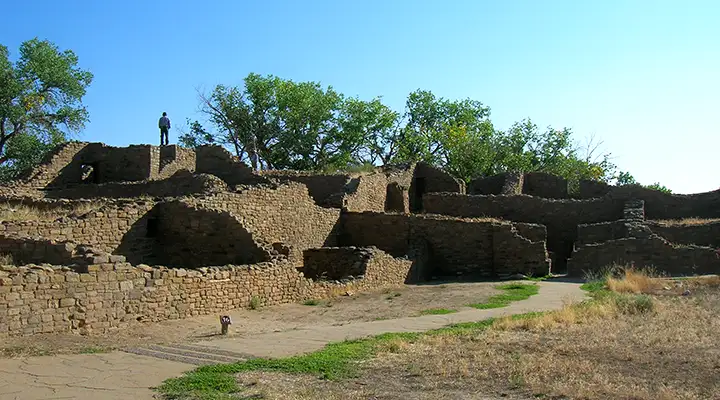
Reconstructed pueblo walls
These well-preserved ruins comprise the Aztec Ruins National Monument: structures and artifacts of Ancestral Pueblo people from the 1100 and 1200s. People associated with Chaco Canyon to the southeast built and used the structures before abandoning the area during the Great Drought of the late 1200s.
Sometime in the late 1000s, a group of Ancestral Puebloans planned and began building a large community on high ground overlooking the Animas River. Then around 1120 they mostly abandoned it when conditions improved in the Mesa Verde and Chaco Canyon areas. People started returning around 1225 and had to build the village larger. Construction stopped again around 1252 CE (in 1257 CE, Mount Sambalas in Indonesia exploded and plunged the world into darkness for months: that is the trigger that set off the Little Ice Age). At that point, the Aztec complex the Chacoans had originally designed had grown into several great houses, some small residential pueblos, tri-walled kivas, roads, earthworks and a great kiva. When you consider the formal layout of the settlement, the purposeful modifications of the landscape and the orientation and visual relationships among the buildings, you can see that the final product was visualized in the original design and finished several generations after the original designers passed on. However, they could not have known of what was coming in the latter part of the 13th century.
Around 1100, the great house of the West Ruin was built. This structure grew to consist of at least 400 contiguous rooms with three stories and numerous kivas, including a great kiva in the plaza.
By 1120, the majority of construction activity on the West Ruin stopped. What little construction continued shifted to the area of the East Ruin (which area is presently off-limits to the public). Another 150 years was spent in the construction of the East Ruin. Both of these ruins were built in Classic Chacoan style. By about 1225 CE the ruins at Aztec had become the new Chacoan capitol.
Archaeologists figure the Aztec Ruins were pretty much abandoned by the late 1200s, like most of the rest of the Four Corners region. It seems most of the people moved east to the Jemez Mountains and Pajarito Plateau in New Mexico before moving downhill to the Rio Grande in search of water and better living conditions.
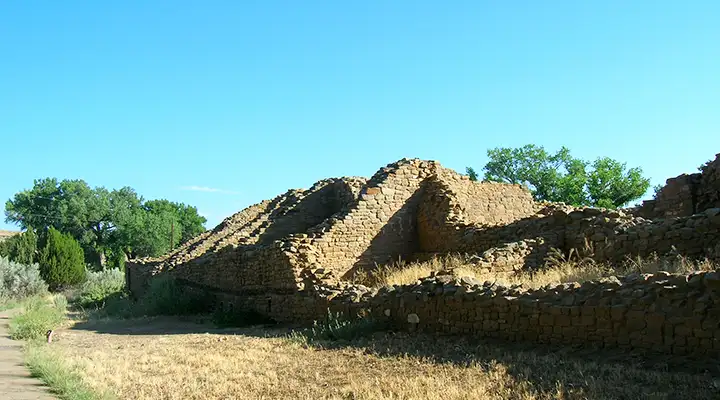
An outer section of the pueblo, reconstructed
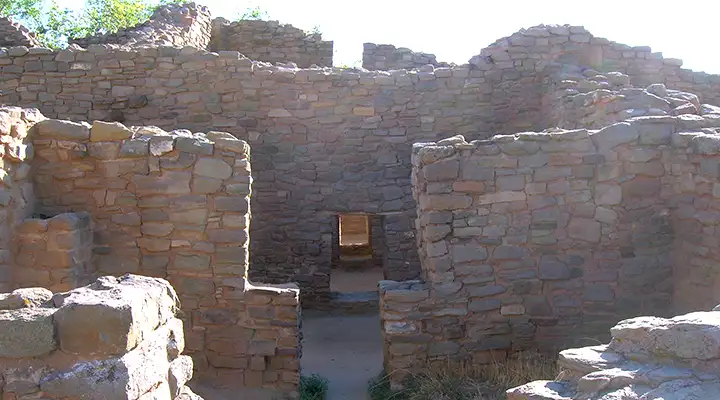
More reconstructed pueblo walls
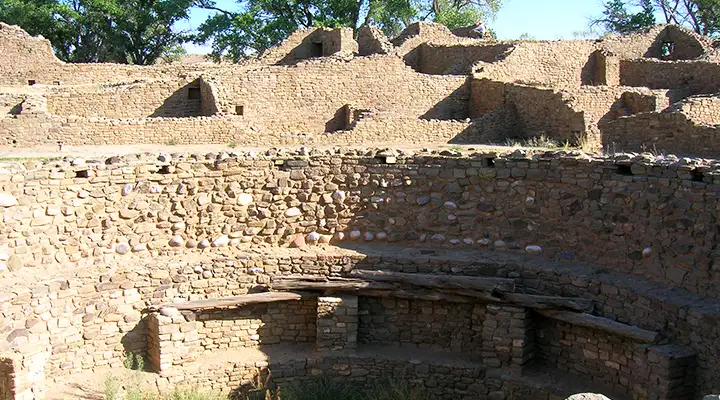
A reconstructed kiva
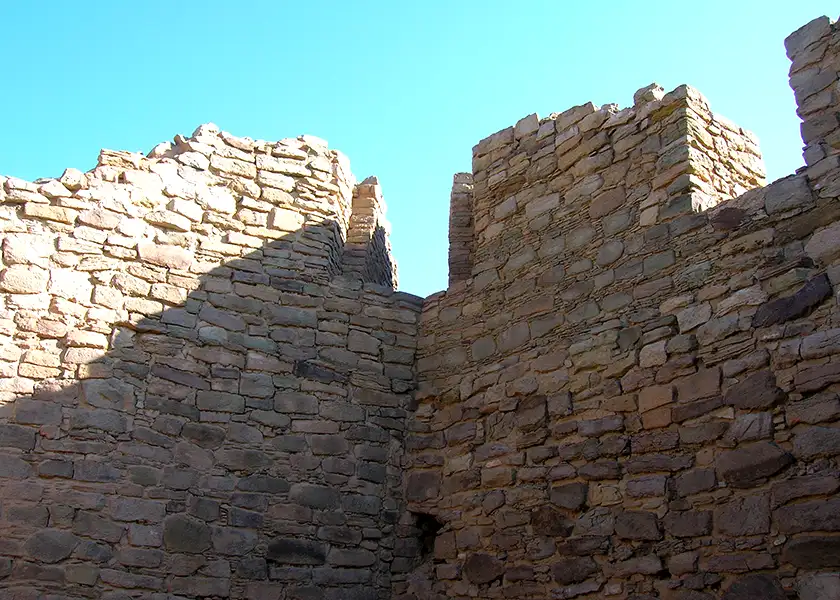
A reconstructed wall
Sites of the Ancients and approximate dates of occupation:
Atsinna : 1275-1350
Awat'ovi : 1200-1701
Aztec : 1100-1275
Bandelier : 1200-1500
Betatakin : 1275-1300
Casa Malpais : 1260-1420
Chaco Canyon : 850-1145
Fourmile Ranch : 1276-1450
Giusewa : 1560-1680
Hawikuh : 1400-1680
Homol'ovi : 1100-1400
Hovenweep : 50-1350
Jeddito : 800-1700
Kawaika'a : 1375-1580
Kuaua : 325-1580
Mesa Verde : 600-1275
Montezuma Castle : 1200-1400
Payupki : 1680-1745
Poshuouingeh : 1375-1500
Pottery Mound : 1320-1550
Puyé : 1200-1580
Snaketown : 300 BCE-1050
Tonto Basin : 700-1450
Tuzigoot : 1125-1400
Wupatki/Wukoki : 500-1225
Wupatupqa : 1100-1250
Yucca House : 1100-1275